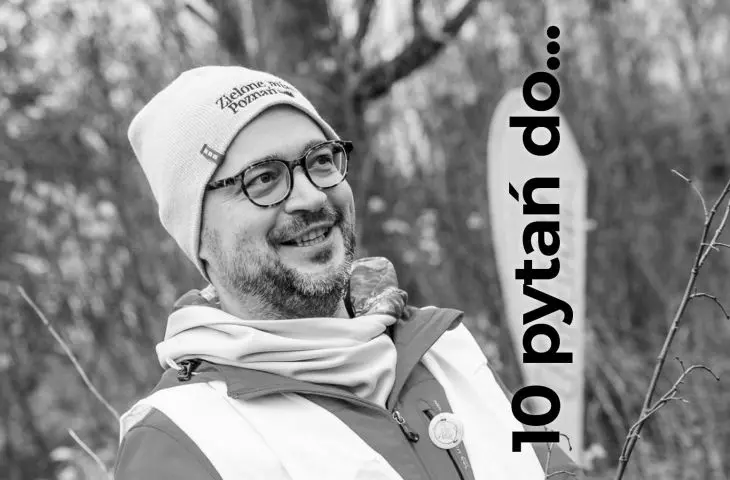"10 Questions to a Landscape Architect" is a new series of short talks inspired by the series "10 Questions to...". This time our attention is turned to landscape architects. In today's episode, Kasper Jakubowski talks about his approach to design.
1 Landscape Architecture is, in one sentence, this...
The art of creating beauty in an architectural setting in harmony with the natural environment; increasingly, it is also the "art of survival."
2. The most underrated aspect of landscape architecture is...
Green infrastructure and emphasis on: water retention, CO2 sequestration, low carbon, soil creation, biodiversity and the biocenotic role of greenery in the city. Ecosystems do specific work for us - and our role is to seek appropriate and modern aesthetics for these pro-nature solutions. Simply planting biologically active areas with plants is definitely not enough today!
3 The most inspiring space for you is....
The "New Strzeszyn" estate in Poznan, where I designed greenery. In Gdansk, retention greenery in estates developed by Rayss Group. I respect the greenery solutions in Browary Warszawskie developed by Echo Investment. The area of the Pearl Brewery in Lublin transformed by the Landscapes Foundation is inspiring.
From foreign realizations is Berlin's Schöneberger Südgelände natural succession park established on a railway track that has been closed for more than 80 years.
The 4th most important book related to landscape architecture....
Emma Marris, Rambunctious Garden: Saving Nature in a Post-Wild World.
5. most inspiring figure...
Matthew Gandy.
6... I start the design process with...
Analyzing the resource, sketches and notes, but also by running around in the field to get a bit of a "feel" for it, learn about the species, "catch" the specific atmosphere of the place....
7 Favorite moment during the work is....
Conceptualizing, looking for solutions and being inspired by nature. But also planting forest, ornamental, edible or ruderal plants - either supervising this work or planting them later together with the residents.
8 The most important realization in your career is.
Poland's first three micro-forests or, if you prefer, pocket forests (tiny forest) in a linear park in Poznan on Milczanska Street for UWI Inwestycje. We planted them between blocks of flats in 2021 together with a thousand residents of Poznan[you can find a conversation about pocket forests and this realization on our website - see here - editor's note].
9 The dream project is....
A designed estate "sunk" literally in greenery - new and existing, salvaged greenery. Friendly to non-human beings, who can find their niches in it. All the greenery on it acts as a green infrastructure and ecological corridor. There is room for "new-old" solutions in it: facade climbing, a water storage wetland, retention greenery (eco-sponges), biodiversity and "glebaria" where we will take care of the soil, microforests planted with theresidents, urban orchards, floral and ruderal meadows, grasses and perennials in the spirit of modern naturalism, but also separate zones with ecological succession and clumps of "self-sown" plants (fourth nature). Where the most invasive species are removed. Fruit trees and shrubs are planted, and even country trees. In addition to parking lots, underground bat shelters are also being built. Holes are being created in the walls for swifts. And on the roof, endangered native xerothermic and steppe species are being grafted in, and moguls are being formed with wild pollinators in mind....
10 Favorite plant is....
Common sorrel - is a very ornamental thistle. It forms beautiful, semi-evergreen rosettes above the ground, and in the second year after sowing, as it blooms, it attracts numerous wild pollinators from the area. Later, the stalks turn brown and are valuable for wintering insects and birds (such as pinnipeds). In the past it was associated with the textile industry. Today it is a beautiful ruderal flower!















